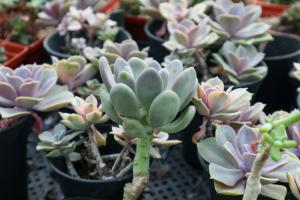Is a Fir Tree a Flowering Plant?
Fir trees are a type of evergreen tree and are often used as Christmas trees due to their unique shape and the pine-like scent of their needles. While fir trees do produce cones, the question remains: are they considered to be flowering plants?
What are Flowering Plants?
Flowering plants, also known as angiosperms, are a type of vascular plant that produces flowers as their reproductive structures. These flowers contain the male and female parts of the plant and allow for pollination to occur. After pollination, the flowers develop into fruits or seeds, leading to the growth of new plants.
Do Fir Trees Produce Flowers?
Fir trees do produce cones, but these are not considered to be flowers. Cones are the reproductive structures of conifers, a group of trees that includes firs, pines, spruces, and other evergreen trees. Unlike flowers, cones do not have petals or sepals and do not produce nectar or perfume to attract pollinators.
Instead, cones rely on the wind to spread their pollen from male cones to female cones. Male cones are located near the bottom of the tree and produce pollen, while female cones are located higher up and contain the ovules where seeds will eventually develop.
So, What Makes Fir Trees Different from Flowering Plants?
The main difference between fir trees and flowering plants is the method of reproduction. Flowering plants rely on pollinators, such as bees and butterflies, to transfer pollen between flowers and ensure fertilization occurs. Fir trees, on the other hand, rely on wind to transport pollen between cones.
Another difference between the two is the timing of reproduction. Flowering plants typically produce flowers and fruits once a year, while fir trees can produce cones every year or every other year, depending on the species.
Conclusion: Fir Trees are not Considered to be Flowering Plants
While fir trees do produce cones, they are not considered to be flowering plants as they do not produce flowers or rely on pollinators for fertilization. Instead, they rely on wind to transport pollen between cones and can produce cones on a more frequent basis than flowering plants produce flowers and fruits.
Despite this difference, fir trees are still an important part of many ecosystems and provide shelter and food for a variety of wildlife. So the next time you see a fir tree, you can appreciate its unique reproductive adaptations and the important role it plays in the natural world.

 how many times do yo...
how many times do yo... how many planted tre...
how many planted tre... how many pine trees ...
how many pine trees ... how many pecan trees...
how many pecan trees... how many plants comp...
how many plants comp... how many plants can ...
how many plants can ... how many plants and ...
how many plants and ... how many pepper plan...
how many pepper plan...
































